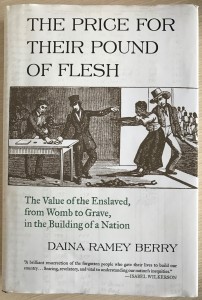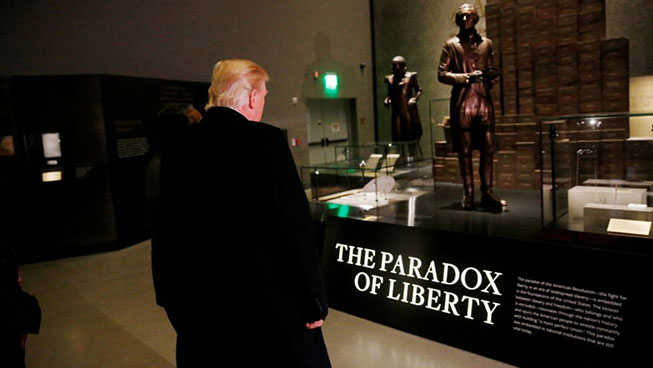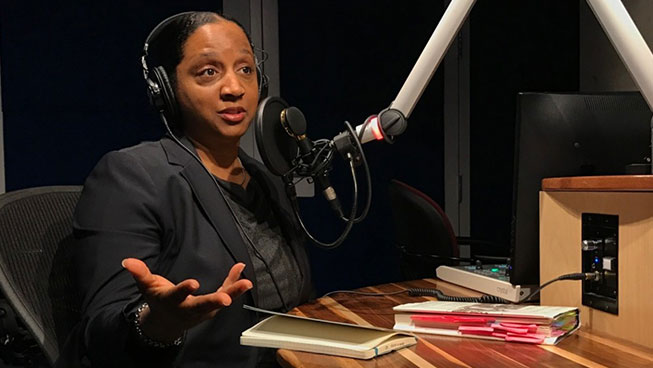
Daina Berry Ramey discusses her new book on slavery with The Post’s Jonathan Capehart for the Cape Up podcast on Feb. 27. (Carol Alderman/The Washington Post)
“I think our nation, as a whole, hasn’t dealt with slavery.”
Leave it to President Trump to prove Daina Ramey Berry, associate professor of history at the University of Texas at Austin, right. When he gazed upon a slave auction block during a tour of the National Museum of African American History and Culture, the president reportedly said, “Boy, that is just not good. That is not good.” No, it wasn’t.
LISTEN HERE

The Price for Their Pound of Flesh: The Value of the Enslaved, from Womb to Grave, in the Building of a Nation – By Daina Ramey Berry
In her new book, “The Price for Their Pound of Flesh: The Value of the Enslaved, from Womb to Grave, in the Building of a Nation,” Berry details just how “not good” the slave trade was. We all know slaves were nothing but property to their owners. After more than 10 years of research, Berry shows how the appraisal of their value started before they were even born and continued long after they were dead. And she uses the records and recollections of the enslaved to detail the depravity of America’s original sin.
“So much of the scholarship on slavery used enslaved people as objects. So they were almost props on a stage. They were sort of part of the story but not really the central part,” Berry told me in the latest episode of “Cape Up.” “And I wanted to know what the enslaved thought, what they felt from their words. And so I spent time looking through archives, over 10 years of research, just trying to find places where I could find their voices.”
Each chapter is a stage in a slave’s life, and Berry uses the accounts of real people to illustrate her point. For instance, at the beginning of Chapter 2, we’re introduced to Rachel, a 1-year-old who was “weeping and refusing to be comforted” while she was on the auction block. That was not nearly as haunting as where Berry’s research led her.
“I had a column in my chart for age and years and I found someone that was 8 months old. So I had to add a column that said ‘age and months.’ Then I found someone that was 3 weeks old that was being sold away from their parent,” Berry said. “But the day that I actually stopped working for about a week was when I found a 3-day-old baby in the auction block without a parent. And I had to create a column for ‘days old.’”
Berry goes into more detail about the realities of slavery, including how the closing of the domestic slave trade in 1808 made enslaved women vital to the gruesome institution’s survival. She also discusses how even in death, slaves held a “ghost value” as their bodies were sold for medical research.

President Trump looks at an an exhibit on slavery during the American revolution while visiting the National Museum of African American History and Culture on Feb. 21. (Jonathan Ernst/Reuters)
But listen to the podcast to hear Berry talk about the “soul value” of the enslaved, how they adapted to being sold four or five times in their lifetimes and why we must not forget that “black people in this country were enslaved longer than we have been free.”
Jonathan Capehart is a member of the Post editorial board and writes for the PostPartisan blog.















